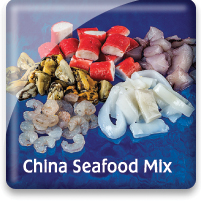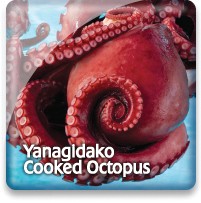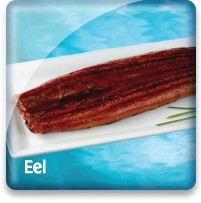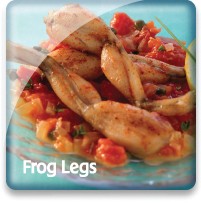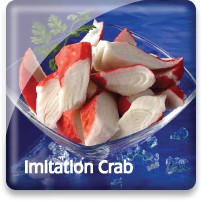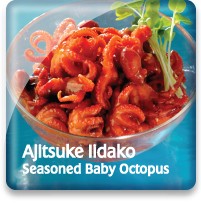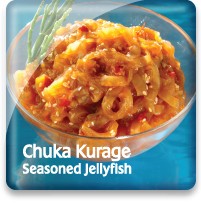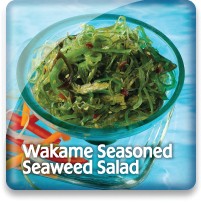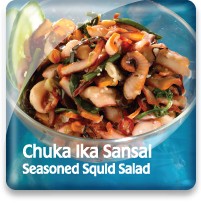
Seasoned Jellyfish (Chuka Kurage)

Market Name: Eating QualitiesOur seasoned jellyfish is nutritious and tasty. It stands alone as a healthy side dish.
   |
Description & CharacteristicsOur Seasoned Jellyfish (Chuka Kurage) is prepared using traditional Japanese Chinese cuisine flavorings and methods. The flavor of chili sauce helps tie together the various flavors and spices in this delicious marinated entrée that is immediately ready to eat upon thawing.
Jelly fish are 95% water and are essentially just a floating mouth and digestive system.
Other Resources |
Handling Instructions for Seasoned Jellyfish (Chuka Kurage)
Seasoned jellyfish should be stored frozen at or below 0°F (-18°C) and then thawed properly when ready eat.
Thawing Seasoned Jellyfish (Chuka Kurage)
Our seasoned jellyfish comes vacuumed sealed in a bag that has been placed inside of a tub. The vacuumed bag seal must first be broken before thawing can commence. The FDA requires that you never thaw vacuumed packed seafood in the refrigerator due to the fact that the anaerobic (airless) environment may allow for the growth of the bacteria Clostridium botulinum that could cause botulism food poisoning. They recommend that you break the vacuum bag’s seal to eliminate this risk and then proceed with the proper thawing. Once the vacuum seal has been broken the bag can remain in the tub while the product thaws under refrigeration between 35 and 40°F (1.7 to 4 degrees C). Complete thawing is generally accomplished within 24-48 hours.
Important Instructions for Seasoned Jellyfish (Chuka Kurage)
Upon thawing, the seasoned jellyfish is ready to eat. The refrigerated shelf life is 3-5 days when held under the proper refrigerated temperature range of 35 to 40°F.
Eating Tips
Our seasoned jellyfish is nutritious and tasty. It stands alone as a healthy side dish.
Taiwan
The island of Tawian, shaped like a tobacco leaf, nation, is located off the coast of China where it is officially part of the Republic of China. Some 23 million people live in an area that is just 245 miles long and 89.5 miles wide, making Taiwan the second-most densely populated country in the world.
While it offers few opportunities for recreational fishing, Taiwan’s commercial fishing industry is well-established, with a fleet of vessels that fish around the world for tuna, sharks, herring, reef fish, horse mackerel, sardines, squid and octopus. Aquaculture is also an important new industry in Tawian, with freshwater farms growing shrimp farms, and tilapia, and marine farms growing shellfish such as clams and oysters.
Go Blue! Seafood Sustainability Spectrum*Click here for an explanation of our Sustainability Spectrum 
Sustainability AssessmentMost edible jellyfish species have relatively short life spans and grow to reproductive age quickly and their populations are thought to be increasing worldwide due to the overfishing of their natural predators, the increasing ocean temperatures, and the ongoing eutrophication of the oceans. Sea Port sources Jellyfish from Taiwan. It is used in their Seasoned Jellyfish item which is part of their Asian Specialty line of products. Jellyfish are growing in popularity as a food source. However, the worldwide fishery data collection and management have not kept pace. Some active management exists mainly to protect more valuable fish species as in the case of Australia prohibiting the netting of jellyfish when schools of juvenile fish are present. If care is not taken during the netting of jellyfish, a high degree of bycatch can occur.
Environmental Impact: ModerateBecause population fluctuations seem to be closely tied with environmental factors, year to year jellyfish biomass is difficult to accurately predict. Management of the resource is inadequate for essentially all jellyfish fisheries. Due to the worldwide increase in jellyfish biomass there is little concern about the health of jellyfish stocks and much more concern about why the world is seeing such an increase and what problems this may pose for the long term health of marine ecosystems.
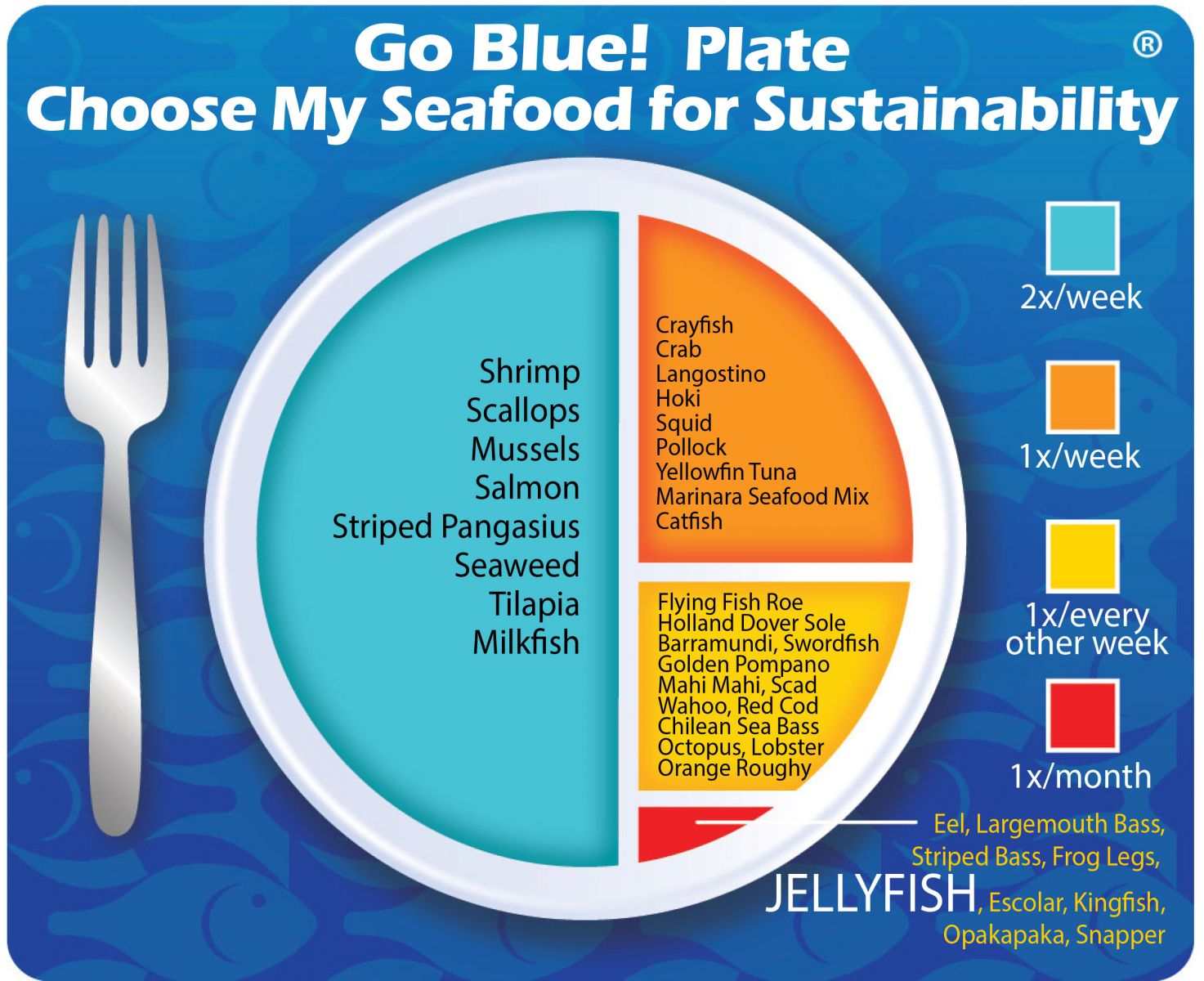
Sustainability Improvements NeededImprovements in the amount and types of data collected are needed in order to accurately establish fisheries trends and also to determine if this increase in the worldwide biomass of jellyfish is a “canary in the coal mine” in regards to overall marine health.
Actions that Sea Port is UndertakingSea Port foresees edible jellyfish stocks increasing worldwide and is excited to bring this new seafood item to the U.S. market. Sea Port believes that increasing the consumption of lower trophic seafood will in the long run help contribute to the protection of our aquatic environments while providing sustainably produced proteins for future generations. Sea Port also believes that, in aggregate, choosing from a diverse variety of seafood is better for sustaining the world’s seafood resources and Seasoned Jellyfish should be a part of this variety.
We created the sustainability assessments for each of our seafood items in order to reveal the existing and potential environmental impacts and risks that are associated with producing them for human consumption. This allowed us to establish the starting position for each of our seafood items along our progressive Go Blue! Seafood Sustainability Spectrum®. These assessments are only a single snapshot in time and because of this, we will continue to assess and update the critical sustainability needs associated with our supply sources and issue updates to the Go Blue! Seafood Sustainability Spectrum® as needed. There is a growing global awareness for the need to assure the sustainability of farmed and wild caught seafood and because of this; all around the world positive changes are rapidly occurring at all levels of the seafood supply chain. We will continue to spread this growing awareness and work with our many industry partners to improve the sustainability of all seafood, which we believe is the ideal protein of choice to feed an ever growing world population. Our Go Blue! Seafood Sustainability Spectrum® serves as our compass and yardstick as we strive to move all our products forward to becoming more sustainable. Please join us in this committed quest and Catch Our Wave® to sustainability by choosing a diverse variety of responsibly produced seafood as part of your diet.
|


